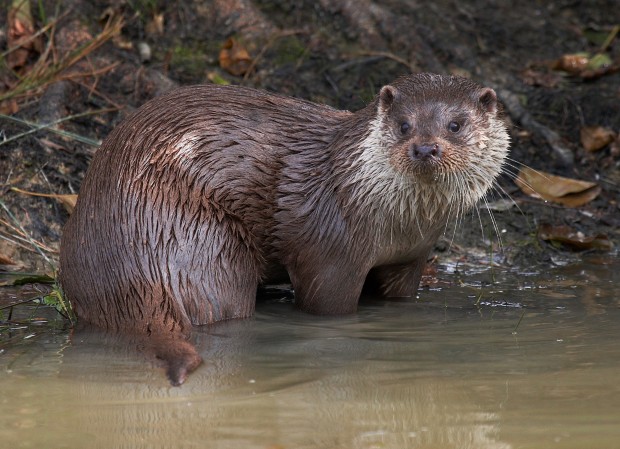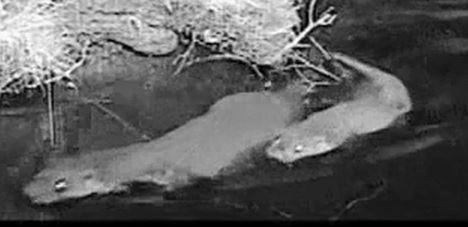Life on the Loch: Otters
The Eurasian otter is one of Britain’s most elusive mammals, but is actually present in every county in the UK.
Otters are part of the “mustelid” family, which also includes stoats, weasels and badgers. While we might think of the otter as a British species, Eurasian otters live across Europe and Asia, as well as parts of Africa and as far as South Korea! They are nocturnal, primarily active at night – although you may be lucky to see an otter in the daytime, especially in winter as they are forced to extend their hours of activity due to the scarcity of food and fewer hours of light.

They live in semi-aquatic environments such as lakes and rivers, and make their homes close by in banks and holes called “holts”. They can also be found in coastal environments and islands, taking advantage of abundant food on the foreshore and intertidal zone. These otters are tied to freshwater pools, however, as they need to wash the saltwater from their coats to keep it water resistant.
Otters suffered extensively from the increase in the use of agricultural pesticides in the 20th century, reducing their numbers dramatically and confining their habitat to the fringes of the UK. But a ban on these chemicals in the 1970s and extensive cleanup efforts in British waters allowed their numbers to recover. They now have direct legal protection in the UK and appear to be extending their ranges and increasing their numbers nationwide.
Otters have been present and breeding at Loch of the Lowes since the early 1990s, with clear signs and sightings for many years since then. Most recently, staff at the reserve have observed the presence of a family group of otters living in the loch – a female and two otter cubs between 3-4 months of age according to their size. The photo below shows the difference in size between the mother and one of her cubs.

Once otters have paired up and mated (usually no more than a few days of courtship) they go their separate ways. Roughly two months later, cubs are born and rely on their mothers to feed them until they are three months old. When they reach this stage, they start to enter water and learn to swim, hunt and play. Juvenile otters will stay with their mother until they are 8-12 months old, at which point they are able to live independently. The family group at Lowes have exhibited signs of playing and learning to swim – we hope to see their regular presence at the loch for the rest of the year!
Male otters have also been observed, both by evidence of their activity in the form of droppings along the shoreline (known as spraint), tracks, camera footage and sightings! Mature males tend to be solitary, living and hunting within stretches of water bodies. Below is a video of a male otter captured in front of the osprey hide on the loch just after dawn.
Otters eat mostly fish, but will also catch small mammals, amphibians and birds if necessary. They will attempt to catch the easiest sort of prey in their habitat, which often entails the slower moving species of fish such as eels. Their senses are well attuned to catching prey underwater, with good short-distance eyesight, hearing, smell and long whiskers to sense movement in the water.
They “spraint” in conspicuous locations to indicate to other otters the boundaries of their territory. Fresh otter spraint is black, tarry and composed of mostly fish bones, with a not unpleasant smell described as reminiscent of jasmine tea. Below is a collection of footage of solitary adult otters – males can sometimes be distinguished from lone females because they are slightly larger but considerably stockier and heavier.
The otters at Loch of the Lowes are being closely monitored and all at the reserve are looking forward to observing their movements over the coming months.
Andy and Johnny
Species Protection Officers
Help protect Scotland’s wildlife
Our work to save Scotland’s wildlife is made possible thanks to the generosity of our members and supporters.
Join today from just £3 a month to help protect the species you love.
Preface
The Eurasian otter is one of Britain’s most elusive mammals, but is actually present in every county in the UK. Otters are part of the “mustelid” family, which also includes …
